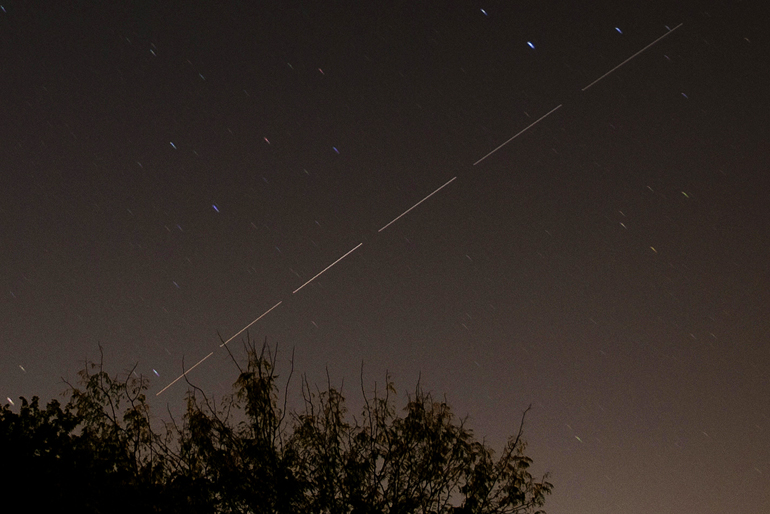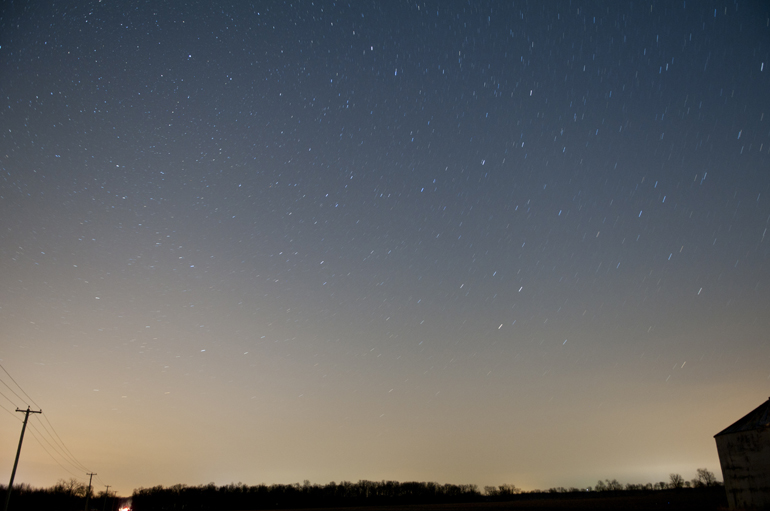On the off chance that 'Gravity' really happens
2013.10.14
I remember a few nights of star-gazing very well. One night in 1997 (for a great many nights, really), I could look out my west-facing bedroom window and see Comet Hale-Bopp, its white and blue tails of Sun-smoked ice and dust dazzling me to no end. The star-spangled sky over the Boundary Waters, of course, scared me back into my tent for four days before I could spend half of my last night there marveling at its vastness. And one very early morning in elementary school, my dad and I (I don't remember if my brother was there) watched the space shuttle chase the International Space Station across the sky before docking with it.
The memories have been embellished, of course, as all memories have been; but still, I smile when I remember those nights. The reminders that we live, as Carl Sagan put it, on "a very small stage in a vast cosmic arena," have stuck with me and help me to cherish our existence here while keeping me from giving it galactic import. Every chance I get, I look up and marvel at how much we've explored and how startlingly much we still have left to explore.
Last week, my attention turned to the International Space Station. I had watched Gravity on its opening weekend with my dad and sister, so the orbiting global cooperative was already on my mind. My dad had found its path over our speck of Earth on a NASA website (still functioning on what was day two of the partial shutdown). I set my camera on top of my car, steadied it with my rigid camera bag, and took the six 30-second exposures you see below (presented as both a flattened .jpg file and as an animated GIF).
Keep looking up.

The International Space Station travels for three minutes over Indianapolis in six 30-second exposures.
Some star trails
or Light pollution: a bane of my existence
2013.03.30
I'll have an entry for my fourth week at the Journal & Courier up tomorrow, but before I put that up, I have another story to tell you.
Last night, I got the urge to drive an hour out of Lafayette and do some stargazing. Even before I started my photo gig, I mapped out a place and a time to go out into the country and ponder the immensity of the universe. I found, on Google Maps, a place south of Brook, Ind., that I had thought would be relatively dark. There, I would get freaked out about how many stars were above me, get used to them, and take some cool photos.
There was one problem: Despite how out-of-the-way my spot was, I couldn't get away from the light pollution. Indiana is not the Boundary Waters: There are some aspects of civilization, whether cities or one-traffic-light towns or large farms, everywhere you go. It resulted in a yellow haze near the horizon as I looked in almost every direction.
I ended up having a second problem, though...
Updated 2014.07.16

f/2.8, 175s, ISO 200. Taken south of Brook, Ind. at 11:14pm EDT.
Time-lapse during the Orionids meteor shower
2012.10.22
The Orionids' peak occurred between Saturday night and Sunday morning, with a projected rate of 25 meteors per hour. I've only properly watched one meteor shower before (the Perseids in 2007), so I figured Saturday was a good day to correct that. With my camera, I drove to the closest dark sky I could find: an empty gravel road off of IN-75 (location approximate). I then took successive 20-second exposures of the eastern sky with two goals: snap a picture of a meteor, and make a time-lapse animation of Orion rising up and to the south.
An hour and four minutes passes in eight seconds. Almost half of that time got increasingly foggy.

tap for title text
